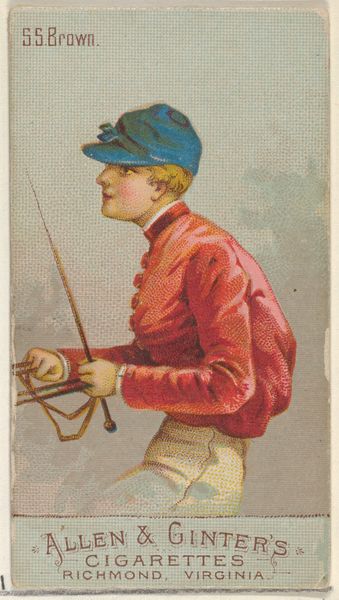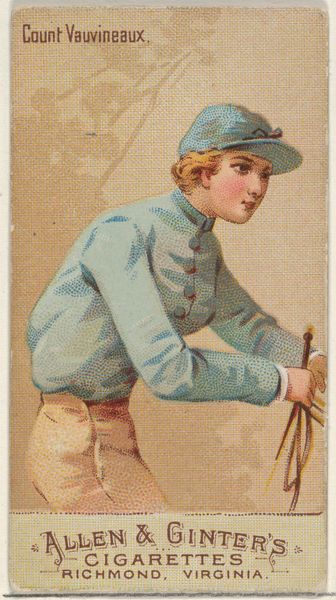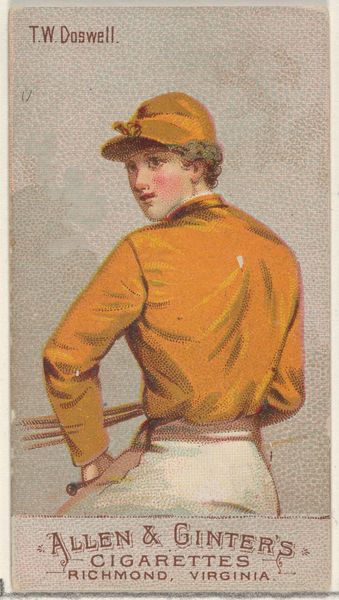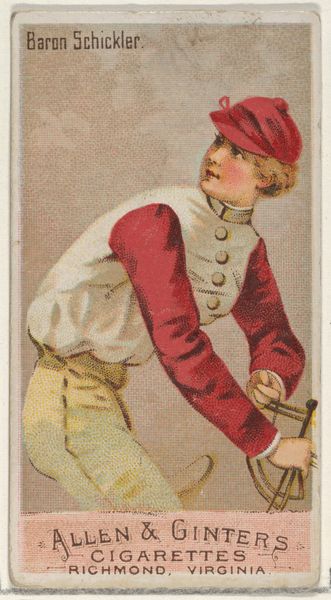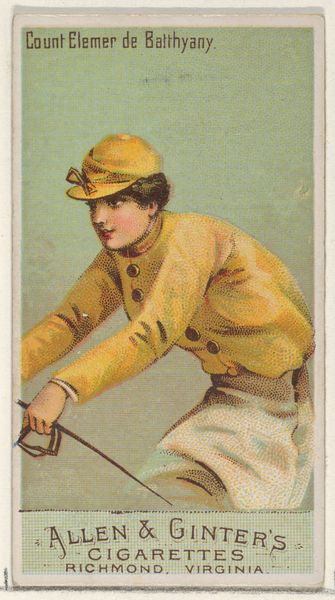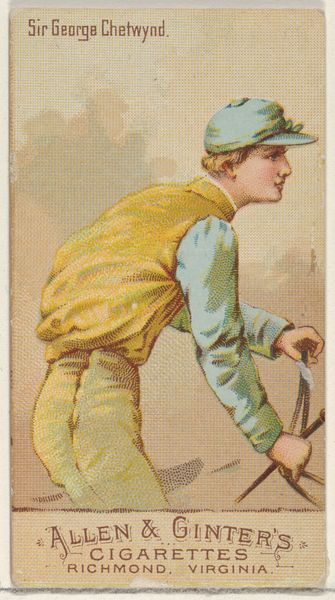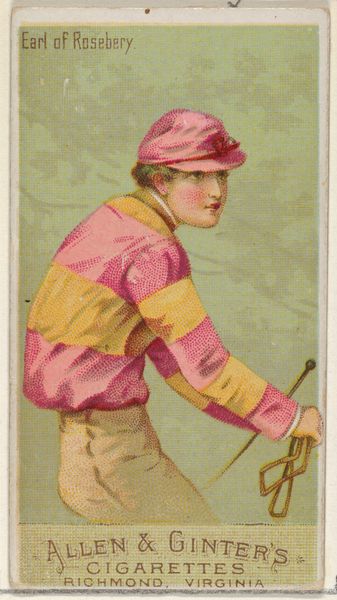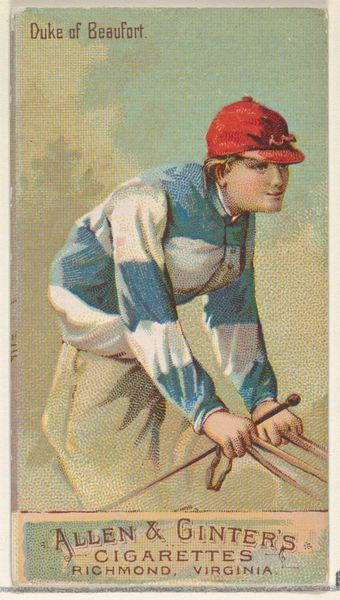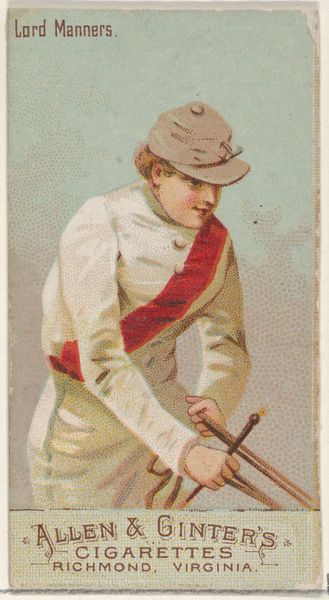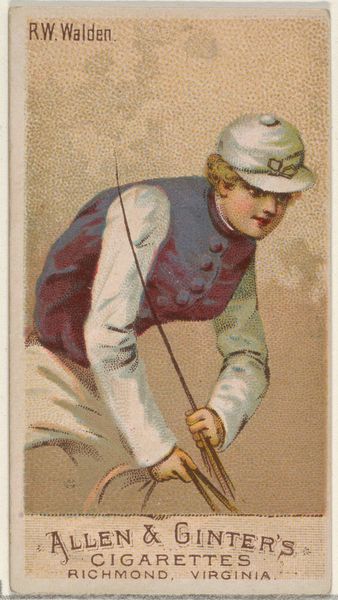
Duke of Westminster, from the Racing Colors of the World series (N22a) for Allen & Ginter Cigarettes 1888
0:00
0:00
#
portrait
# print
#
caricature
#
portrait reference
Dimensions: Sheet: 2 3/4 x 1 1/2 in. (7 x 3.8 cm)
Copyright: Public Domain
Curator: At first glance, this is a surprisingly intimate yet detached portrait of the Duke. Editor: It's an interesting feeling, isn't it? This chromolithograph from 1888 comes from a series titled "Racing Colors of the World," a set of trade cards distributed by Allen & Ginter Cigarettes, revealing the colors worn by prominent racehorse owners. Curator: Trade cards for cigarettes, imagine that world! What's immediately striking to me is the stylized portrayal; it’s so controlled and precise, almost diagrammatic. The duke feels less like an individual and more like a stand-in for an archetype of aristocracy and leisure. It feels symbolic rather than truly about the individual. Editor: The use of flattened space and the emphasis on pattern—look at the subtle textures in his jacket and the background—reflect a real interest in Japonisme, the influence of Japanese art so prominent during this period. Consider the role of these cards, though. They were not high art; they served a promotional purpose, democratizing access to images and even "knowledge," packaged with everyday consumer goods. It’s fascinating how these seemingly innocuous cards transmitted values, class markers, and cultural aspirations. Curator: Exactly! The racing colors themselves, codified and presented as distinct brands, tell us of an age where even identity could be commodified, packaged, and sold. Look at the detail in that golden yellow; for some, it represented aspiration. And that's an amazing intersection: a commentary on hierarchy delivered through capitalism! The Duke becomes an emblem, instantly recognizable by his hues. These hues must surely evoke powerful associations beyond their literal designation. Editor: Yes, and to delve deeper, the image performs a function. Allen & Ginter cigarettes attached themselves, in the consumers' mind, to established European nobility by portraying prominent members from the leisure class and linking them with luxury tobacco consumption. Curator: So, these "collectables" were really tools shaping aspirations, weren’t they? The simple presentation suggests clarity but beneath lies intricate cultural programming. I leave with thoughts about brands: what do they communicate to me? What feelings are attached, intentionally, through simple color, like that gorgeous goldenrod. Editor: Precisely! This little card invites reflection on the artifice of branding, even in a seemingly simpler, bygone era, highlighting the profound intertwining of power, representation, and everyday life.
Comments
No comments
Be the first to comment and join the conversation on the ultimate creative platform.
